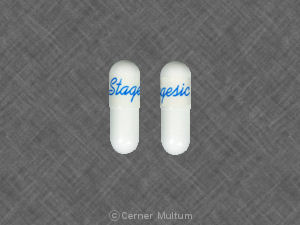Stagesic Interactions
There are 683 drugs known to interact with Stagesic (acetaminophen/hydrocodone), along with 19 disease interactions, and 1 alcohol/food interaction. Of the total drug interactions, 216 are major, 456 are moderate, and 11 are minor.
- View all 683 medications that may interact with Stagesic
- View Stagesic alcohol/food interactions (1)
- View Stagesic disease interactions (19)
Most frequently checked interactions
View interaction reports for Stagesic (acetaminophen / hydrocodone) and the medicines listed below.
- Aspirin Low Strength (aspirin)
- Aspirin Low Strength (aspirin)
- Calcium 600 D (calcium / vitamin d)
- Calcium 600 D (calcium / vitamin d)
- Flax Seed Oil (flax)
- Flax Seed Oil (flax)
- Glucosamine & Chondroitin with MSM (chondroitin / glucosamine / methylsulfonylmethane)
- Glucosamine & Chondroitin with MSM (chondroitin / glucosamine / methylsulfonylmethane)
- lansoprazole
- lansoprazole
- lisinopril
- lisinopril
- multivitamin
- multivitamin
- pravastatin
- pravastatin
- Q-Sorb Co Q-10 (ubiquinone)
- Q-Sorb Co Q-10 (ubiquinone)
- safflower
- safflower
- Vitamin D3 (cholecalciferol)
- Vitamin D3 (cholecalciferol)
Stagesic alcohol/food interactions
There is 1 alcohol/food interaction with Stagesic (acetaminophen / hydrocodone).
Stagesic disease interactions
There are 19 disease interactions with Stagesic (acetaminophen / hydrocodone) which include:
- alcoholism
- liver disease
- impaired GI motility
- infectious diarrhea
- prematurity
- acute alcohol intoxication
- drug dependence
- hypotension
- intracranial pressure
- respiratory depression
- gastrointestinal obstruction
- PKU
- adrenal insufficiency
- liver disease
- renal dysfunction
- seizure disorders
- urinary retention
- arrhythmias
- biliary tract disease
More about Stagesic (acetaminophen / hydrocodone)
- Stagesic consumer information
- Compare alternatives
- Drug images
- Latest FDA alerts (11)
- Side effects
- Dosage information
- During pregnancy
- Drug class: narcotic analgesic combinations
Related treatment guides
Drug Interaction Classification
| Highly clinically significant. Avoid combinations; the risk of the interaction outweighs the benefit. | |
| Moderately clinically significant. Usually avoid combinations; use it only under special circumstances. | |
| Minimally clinically significant. Minimize risk; assess risk and consider an alternative drug, take steps to circumvent the interaction risk and/or institute a monitoring plan. | |
| No interaction information available. |
See also:
Tylenol
Tylenol is a pain reliever and a fever reducer used to treat many conditions such as headaches ...
Cymbalta
Cymbalta (duloxetine) is used to treat major depressive disorder, general anxiety disorder and ...
Humira
Humira is a tumor necrosis factor blocker used to treat many inflammatory conditions in adults ...
Naproxen
Naproxen is a nonsteroidal anti-inflammatory drug used to treat pain or inflammation caused by ...
Oxycodone
Oxycodone is an opioid analgesic used to treat moderate to severe pain; it has a high potential for ...
Duloxetine
Duloxetine is a selective serotonin and norepinephrine reuptake inhibitor antidepressant used to ...
Tramadol
Tramadol is an opioid medication that may be used to treat moderate to moderately severe chronic ...
Cyclobenzaprine
Cyclobenzaprine is a muscle relaxant and works by blocking pain sensations. Includes ...
Aspirin
Aspirin is used to treat mild to moderate pain and to reduce fever or inflammation. Learn about ...
Further information
Always consult your healthcare provider to ensure the information displayed on this page applies to your personal circumstances.


